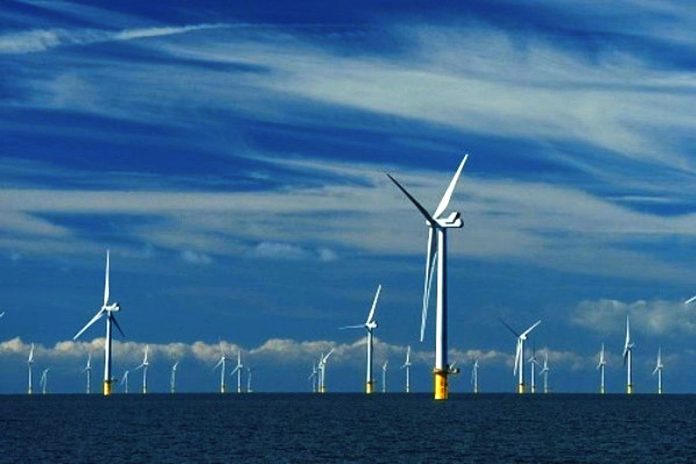India’s clean energy ambitions received a significant boost on Wednesday when the Union Cabinet approved a Viability Gap Funding (VGF) scheme for offshore wind energy projects, with a total outlay of Rs 7,453 crore.
This includes Rs 6,853 crore allocated for the installation and commissioning of 1 GW of offshore wind energy projects and an additional Rs 600 crore for upgrading ports to meet the logistical needs of these projects.
Two offshore wind energy projects, each with a capacity of 500 MW, will be developed off the coasts of Gujarat and Tamil Nadu.
While the projects will be established by private developers selected through a transparent bidding process, the power excavation infrastructure, including the offshore substations, will be constructed by Power Grid Corporation of India (PGCIL).
The Ministry of New and Renewable Energy (MNRE), as the nodal ministry, will coordinate with various ministries and departments to ensure successful implementation of the scheme.
The VGF support aims to reduce the cost of power from offshore wind projects, making it viable for purchase by electricity distribution utilities (DISCOMs).
Construction and operation of offshore wind energy projects require specialised port infrastructure capable of handling the storage and movement of heavy, large-dimension equipment. Under the VGF scheme, the Ministry of Ports, Shipping and Waterways will support the development of two ports to meet these requirements.
Many Advantages
Offshore wind energy harnesses the power of winds over the open seas, providing a clean and renewable energy source.
The benefits of offshore wind energy are numerous. It eliminates the limitations posed by land availability, boasting a higher capacity utilisation factor nearing 50 per cent. Additionally, offshore wind turbines are more efficient than their onshore counterparts.
India, with its 7,600 km coastline and favourable geographical conditions, has significant potential for offshore wind energy development. However, despite these advantages and a strong policy framework, the sector has yet to achieve its potential, with no offshore wind projects currently established in the country.
India has positioned itself as a champion for renewable energy — its 2030 targets as articulated in its formal, nationally-determined contributions speak of tripling renewable energy capacity to 500 GW by 2030.
The recent cabinet approval marks a strategic move to boost India’s offshore wind energy sector, setting the stage for a major advance in the country’s green energy goals.
The successful commissioning of 1 GW of offshore wind projects is expected to generate approximately 3.72 billion units of renewable electricity annually, reducing carbon dioxide emissions by 2.98 million tonnes annually for 25 years.
Moreover, this initiative will not only kick-start offshore wind energy development in India but also create a supportive ecosystem for ocean-based economic activities. This ecosystem is expected to facilitate the development of an initial 37 GW of offshore wind energy, requiring an investment of approximately Rs 450,000 crore.


